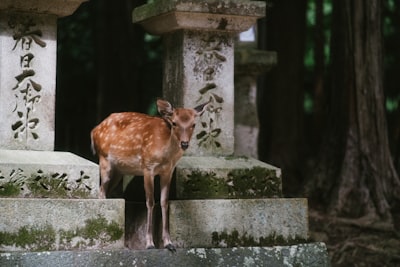PFAS: The Hidden Threat Lurking in Japan's Endangered Wildlife
Per- and polyfluoroalkyl substances (PFAS), commonly known as "forever chemicals," have become a growing concern across the globe—and an alarming new study puts Japan’s vulnerable wildlife in the spotlight. Recent findings reveal dangerously high PFAS concentrations in the critically endangered Tsushima leopard cat, raising urgent questions about environmental pollution, toxic chemical accumulation, and the future of wildlife conservation.
What Are PFAS and Why Are They Called "Forever Chemicals"?
PFAS are a group of man-made chemicals designed for their water- and stain-resistant properties. They are widely used in firefighter foam, waterproof clothing, nonstick cookware, and food packaging. The problem? These chemicals do not break down easily, allowing them to persist for decades in soil, water, and living organisms—in other words, they’re almost impossible to eliminate from the environment.
Alarming PFAS Levels in Tsushima Leopard Cats: What the Study Reveals
A pioneering survey by Ehime University found PFAS in every Tsushima leopard cat tested, with levels up to eight times higher than those recorded in European wildcats. This raises critical alarm bells:
- Potential health impacts: PFAS are linked to cancer, liver and kidney damage, hormonal disruption, and immune suppression.
- Species at risk: Only about 100 Tsushima leopard cats remain, making them desperately vulnerable to any environmental threat.
- Bioaccumulation through the food chain: PFAS accumulate in animal tissues as they move through aquatic and terrestrial food webs.
Key Keywords and Search Trends
- PFAS contamination
- Forever chemicals in wildlife
- Endangered species pollution Japan
- Tsushima leopard cat conservation
- Toxic chemicals in animals
- PFAS health risks
- Environmental impact of PFAS
How Do "Forever Chemicals" Enter Wildlife Habitats?
Experts suspect that illegal dumping, marine debris, and outdated waste management systems are the main culprits. These toxic substances leach into waterways, contaminate soil, and accumulate in the plants and animals that make up the local food chain. Wild animals, especially predators like the Tsushima leopard cat, can suffer the effects of this bioaccumulation at the top of the food web.
Conservation Implications: Can We Save Endangered Japanese Wildcats?
The plight of the Tsushima leopard cat underscores a global problem: chemical pollutants threaten not only single species, but entire ecosystems. Conservationists now face tough questions:
- Is current habitat protection enough if toxic chemicals persist?
- How can policymakers detect and control pollution sources?
- Should PFAS be more strictly regulated?
What Is Being Done—and What Can the Public Do?
Efforts by Japanese zoos to breed Tsushima leopard cats are an important step, but without addressing contamination at its source, these efforts may fall short. Nationwide monitoring, stronger regulation of industrial chemicals, and public education campaigns are essential to combat this invisible threat.
What you can do:
- Properly dispose of household chemicals and avoid products with PFAS.
- Support wildlife conservation organizations and responsible consumer choices.
- Stay informed about environmental issues affecting your region.
FAQ: PFAS and Threatened Wildlife in Japan
Q: What are the health risks of PFAS exposure to animals?
A: Research links PFAS to cancer, organ system toxicity, reproductive issues, and weakened immune response.
Q: Why is the Tsushima leopard cat important?
A: It is a unique subspecies found only in Japan and serves as an indicator for broader environmental health in the region.
Q: How can PFAS pollution be reduced?
A: Stronger regulations, safer alternatives, stricter waste controls, and public awareness are key steps.
Q: Are humans at risk from the same chemicals?
A: Yes—PFAS contamination has been detected in drinking water and food supplies worldwide, sparking health investigations.
Conclusion: Confronting the PFAS Challenge Today
The crisis facing Japan’s Tsushima leopard cat is a wake-up call about the hidden dangers of persistent environmental pollutants. By raising awareness, supporting science-based policies, and practicing conscious consumption, we can help safeguard not only rare species, but also our shared ecosystems for future generations.
Learn more from reliable resources:

Comments
No comments yet. Be the first to comment!